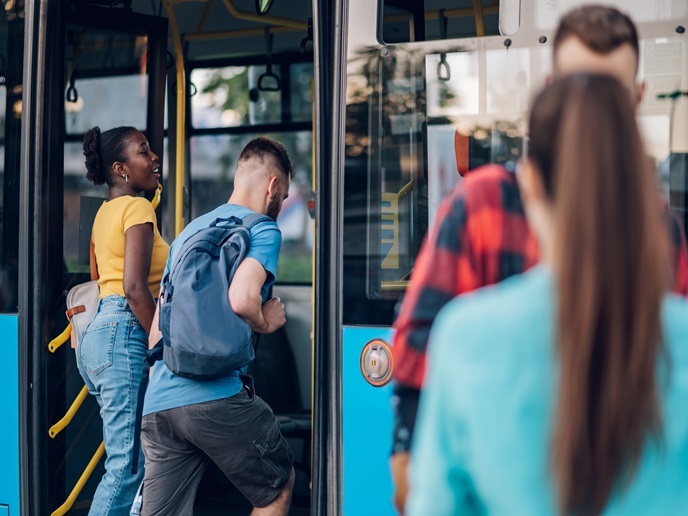Putting citizens at the heart of the transport revolution
Road vehicles will soon be able to interact directly with each other and with road infrastructure. Such connected, cooperative and automated mobility (CCAM) will help to alleviate urban congestion, extend the reach of public transportation and improve road safety. It is critical that this transition is inclusive, and that every European citizen can benefit from this coming technological revolution. “The field of CCAM has tended to focus on the technological aspects, leaving social issues related to inclusion and equal opportunities in the background,” notes SINFONICA project technical coordinator Giulia Renzi, from the University of Modena and Reggio Emilia in Italy. “SINFONICA wanted to address this challenge, and steer CCAM research and innovation towards the topics of inclusiveness and accessibility.”
Co-creating research
The SINFONICA project relied heavily on social engagement to co-create research activities and gather opinions, fears and views that could help to identify people-oriented solutions. Groups of users and stakeholders were established in four different locations – the Province of Noord Brabant in the Netherlands, the municipalities of Trikala in Greece and Hamburg in Germany, and the West Midlands region in the United Kingdom. Key issues were discussed, and the results reflected in a preliminary report for more inclusive CCAM services. These highlight the need for passenger assistance, good communication between service provider and passenger, and inclusive transport payment methods (i.e. not only via an app). “These groups were formed to reflect as much as possible the diversity and heterogeneity of the needs, concerns and expectations of future mobility users, citizens and stakeholders,” explains Renzi. “Particular attention was paid to people with mobility challenges.”
Charting attitudes towards CCAM
Opinions from these groups have been gathered through interviews, focus groups and workshops, as well as an EU-wide online survey that was translated into eight languages. “This enabled us to collect more than 4 500 datasets,” adds Renzi, “providing us with an important baseline on which to carry out analyses during the second phase of our project.” During the remainder of SINFONICA, which runs until August 2025, this data and information will be put to use. Materials such as guidelines, best practices and recommendations will be drafted and made available to policymakers and industry. The aim of these is to stimulate decision-making and to guide choices towards more inclusive and accessible CCAM solutions. “This work will help to lay the foundation for a new research approach to CCAM, combining technology with the humanities,” says Renzi. “Our recommendations and best practices will come not just from analysis or theories, but from people, citizens, associations, and so on.”
Tools for transport authorities
The SINFONICA project also aims to develop tools to support transport authorities and policymakers. These will include a generic simulation model for CCAM solutions that will enable fairness and inclusiveness to be incorporated in the management of traffic flows. A Knowledge Map Explorer will also be developed. This will be an intuitive interface for consulting tailored recommendations for specific categories of stakeholders. “Another aim of the project is to serve as an inspiration for future projects dealing with CCAM,” says Renzi. “Our hope is that aspects of the social sciences and humanities will be increasingly explored on the path towards innovation in this area. This will ultimately make public transport more sustainable, inclusive and accessible, so that no one is left behind.”
Keywords
SINFONICA, transport, connected, cooperative and automated mobility, CCAM, passenger, inclusive, social, humanities



